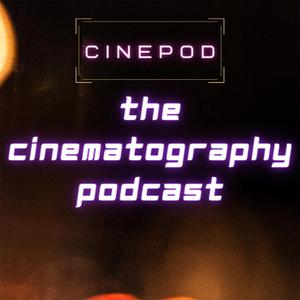Masters of the Air cinematographer Richard Rutkowski, ASC
Masters of the Air on AppleTV+ is about the pilots who served in the 100th Bomb Group in the U.S. Air Force during World War II. Cinematographer Richard Rutkowski shot episodes 107 and 108, which included both aerial flying, bombing and imprisoned airmen at a German POW camp. From the beginning, Richard was impressed with how everything was organized on such a massive scale. The props, set design and costumes were extremely exact to the time period. “I really am attracted to stories that have authenticity in them,” says Richard. “And they put the authentic on camera. It is all exactly what it's meant to be, what it was at the time, as close as they can get.”
Richard worked with director Dee Rees on their block of Masters of the Air. The prison camp scenes involved working with searchlights, mud and absolute darkness at night, with up to 250 people in a scene. He chose to light in a way that would emphasize the dim lighting, gray atmosphere and unhealthy look for the POWs. Some of the Tuskegee Airmen, the legendary African-American fighter pilots, are also brought to the POW camp and the prisoners are integrated into the previously racially-segregated fighting force.
Shooting the action inside the planes involved large-scale LED volume screens surrounding the aircraft sections, with an LED roof overhead, which created most of the lighting for the scene. The actors were placed on a gimbal controlled articulated steel deck so they could react to the motion. The cameras tracked with the video system, and had GPS locators that allowed the background to respond to where the camera was so that it knew how much background to put in.
Richard was the sole cinematographer on the FX series The Americans for several seasons. The Americans was about a Russian spy couple posing as Americans in suburban Washington D.C. during the Cold War in the 1980's. Richard established the look of the show, with the couple's “normal” DC life leaning into bolder primary colors, in a kind of red, white, and blue cleanliness. By contrast, in their double life as spies, Richard chose a grittier, darker and grainy look. On The Americans, Richard says he learned the value of letting the actors do their work. “(There is) an unspoken connection being made about whether a scene is moving well, whether a take is truly finished. I would learn to stop reaching for that cut button. No matter who said what, if the actor was in it, we don't cut. You leave the boom up, keep out of the frame. If the actor's in it, we're not cutting. We'll go till they're ready.”
As a kid, Richard's father was a fine art painter and he grew up all over the country. He began making 16mm films in college and working with theatrical director Robert Wilson. After college, Richard started working on small budget films, working his way up through the camera department, including being a second assistant camera on School Ties with cinematographer Freddie Francis, a two time Oscar winner. After School Ties, Richard wrote Ed Lachman asking to work with him, and he went on to work with Ed on several movies. He feels that working your way up and learning all the different crafts in the camera department is a great education for a DP.
Masters of the Air is available on AppleTV+.
Find Richard Rutkowski: Instagram @richardrutkowskidp
Sponsored by Hot Rod Cameras www.hotrodcameras.com
Sponsored by Aputure: https://www.aputure.com/
The Cinematography Podcast website: www.camnoir.com
Facebook: @cinepod
Instagram: @thecinepod
Twitter: @ShortEndz
20 March 2024, 11:48 pm
